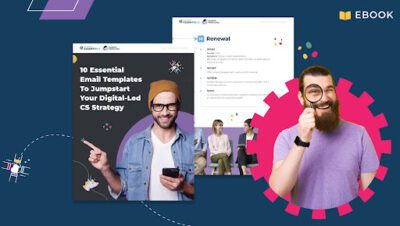Customer success (CS) is a multifaceted discipline. It’s both art and science. It’s a balance of high-touch and digital-touch interactions. It’s about creating efficiency while also building deep relationships. At the heart of this juggling act is Customer Success Operations (CS Ops). While CS ops is often viewed as a role or even a team, in reality, long before it’s a headcount, it’s a responsibility that often lives on the to-do list of the CS team lead.
CS ops is an imperative that leaders should account for before they are able to hire headcount in order to scale workflows and team capacity. That may sound overwhelming, but the Gainsight Community always rallies to lend support to help you maximize CS Ops responsibilities when it’s just one of many hats you’re wearing.
Recently, the Catapult webinar series welcomed Kendra McClanahan, Director of CS Ops at Gainsight. McClanahan identified priority CS ops tasks to tackle, and offered suggestions for low-hanging fruit opportunities to create scale in your Customer Success program.
Standardize Before You Digitize
Creating a standardized customer experience is essential to building effective customer success workflows. Regardless of the type of customer segment, it’s important to ensure there is a set of expectations and standards that all customers can rely on to achieve desired outcomes. This not only establishes a consistent experience, but it also helps to create trust and loyalty.
Standardization should outline clearly defined actions for handling customer inquiries, resolving complaints and operationalizing feedback. Additionally, a cadence of regular and consistent customer communications needs to be defined so that customers know what to expect from your business.
Once a standard of customer success has been established, you can then evaluate ways to digitize elements of that experience. This will involve both increasing the number of resources available, as well as leveraging technology to automate manual processes. The result will be a Customer Success program that is consistent and efficient regardless of being a high-touch or digital-led segment.
Scale Through More Than Email
Most people think of digital scale and they instantly think of email. Automating email can be a big part of your digital strategy, but if it is the only tool you’re using, you’ll be missing opportunities to engage and serve your customer. Other channels that you should consider when creating scale in your CS programs include:
- Triggered surveys to identify sentiment and collect feedback in an organized way
- In-app messaging that pulls resources into view at the point of need for the user
- Best practice webinars and roundtables that let your successful customers share their learnings with peers
- Community forums and threads that address commonly asked questions
CSM Productivity Is a Scale Strategy
Customer Success Managers (CSMs) are the backbone of the customer experience, yet they often struggle with the process of managing the constant stream of customer requests and inquiries. As customer relationships become increasingly complex, CSMs are tasked with ever-increasing responsibilities.
Your CS ops strategy needs to identify ways for CSMs to be productive and efficient. To maximize their productivity and create CSM capacity for scale, standardizing internal processes is key.
One way customer success operations can help CSMs become more efficient is by finding ways to maximize the day-to-day tools available to them. Examples of such processes could include a streamlined way of saving transcripts of customer call recordings to your centralized customer notes. Another way to create more time for CSMs is to create an efficient method of documenting client notes in multiple places without requiring double entry.
Automating these processes can help save CSMs valuable time and energy, allowing them to focus on more strategic tasks.
Starting Your Digital Scale Journey
All CS teams are looking to build more efficiency into their business processes. If you’re just getting started, here are some simple ways to make an impact now:
- Revisit Your Welcome Email: Chances are you may already have an automated process around this. But, when was the last time you revisited your new customer welcome email? Beyond a friendly greeting and CSM introduction, can the email get updated to include tasks and self-service resources the customer can engage with to jump start their onboarding?
- Post-Implementation Survey: Closing out implementation is an important milestone in the customer journey. Surveying the customer helps you capture sentiment, identify early risk indicators, and determine if you can turn their good experience into a testimonial. Multi-channel delivery will increase response rates, and once completed, automation should put the customer into any one of the mentioned digital workflows based on their response.
- Task Reducing Playbooks: One place CSMs get bogged down is overly detailed playbooks containing tasks that make them more process administrators than customer advocates. Take the time to go through your critical playbooks and determine what tasks can be automated or removed based on previous actions the CSM has taken. Fewer CTAs and tasks means the CSM can focus their attention on revenue-critical activities.
- Start a Slack Group: Community can come together in a lot of different ways. At the core, you need to set up a venue where customers can gather to connect, get help, and share ideas. Getting started can be as simple as setting up a Slack group with channels covering a range of topics relevant to your customers.
Overall, customer success operations is essential to any business that is looking to scale their workflows and team capacity. By accounting for CS ops from the start, your team can create a method and a mindset to continuously streamline CS processes and ensure that customers have a successful and enjoyable experience with your product.
If you’re ready to get a jumpstart on your Digital Customer Success program, get started with these 10 essential email templates:


